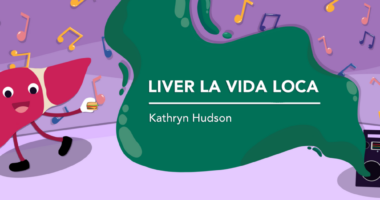SIR-Spheres Radiation Microspheres Outperform Chemo in Liver Cancer Trial

SIR-Spheres radiation microspheres shrank the tumors of a significantly larger number of liver cancer patients than the standard-of-care chemotherapy Nexavar (sorafenib), according to a Phase 3 clinical trial.
The microspheres, which Sirtex developed for delivery directly to tumors, also outperformed Nexavar on other measures of the disease. The trial failed to meet its primary objective of increasing patients’ overall survival, however. The cancer that the study dealt with was advanced hepatocellular carcinoma that had not spread to other parts of the body.
Twenty-three percent of the patients treated with SIR-Spheres had their tumors shrink, versus only 2 percent of those who took oral Nexavar twice a day, according to the SIRveNIB trial (NCT01135056). And the SIR-Spheres group had fewer side effects.
Pierce Chow, a Singapore cancer surgeon, presented the trial findings at the American Society of Clinical Oncology annual meeting in Chicago on June 4. Chow, who is with the National Cancer Centre Singapore and Singapore General Hospital, was lead trial investigator.
The presentation was titled “Phase III multi-centre open-label randomized controlled trial of selective internal radiation therapy (SIRT) versus sorafenib in locally advanced hepatocellular carcinoma: The SIRveNIB study.”
The Asia portion of the trial completed its planned enrollment of 360 patients in May 2016.
The main objective of the multi-center, randomized, controlled SIRveNIB study was to see if SIR-Spheres would improve patients’ overall survival, in comparison with Nexavar.
One of the secondary measures of the therapy’s effectiveness was progression-free survival, or the time it took for patients’ disease to progress or for them to die. Another secondary measure was tumor response rate, or the proportion of patients whose tumors shrank after treatment. Additional measures included SIR-Spheres’ safety and toxicity and patients’ quality of life after treatment.
Almost 17 percent of the patients receiving SIR-Spheres responded to treatment, compared with only 1.7 percent in the Nexavar group. The trial covered what scientists call an intent-to-treat population, which consisted both of patients who finished the treatment regimen and who started it but dropped out. Twenty-three percent of patients who completed the SIR-Spheres treatment had their tumors shrink, compared with 2 percent who received Nexavar.
Researchers said the adverse advent rate among the SIR-Spheres group was half that of the Nexavar group — 27.7 percent versus 50.6 percent.
The median overall survival rate of the SIRE-Spheres patients was 8.84 months, compared with 10.02 months in the Nexavar group. The difference was not statistically significant, researchers said.
When the analysis considered patients who finished their treatment, the median survival rate of the SIR-Spheres group was 11.3 months, versus 10.4 months for the Nexavar group. Again the results were not statistically significant.
Results from the secondary measures were more promising. The progression-free survival rate for the SIR-Spheres patients was 6.3 months, compared with 5.2 months for the Nexavar patients. And the time it took for the cancer to progress was 6.7 months in the SIR-Spheres group, versus 5.2 months for the Nexavar group.
Side effects of SIR-Spheres treatment were rare and manageable, researchers said.
“The comparative data on side effects reported in the SIRveNIB study unequivocally favored [SIR-Spheres] Y-90 resin microspheres over sorafenib,” Chow said in a press release.
“Patients treated with Y-90 resin microspheres reported substantially less fatigue (3.8% vs. 15.4%), diarrhea (1.5% vs. 29.6%), hand-foot skin reaction (0.8% vs. 54.9%), alopecia [hair loss] (0% vs. 9.9%) as well as hypertension [high blood pressure] (0% vs. 14.8%) than those treated with sorafenib.”
The SIRveNIB findings mirrored the results of the Phase 3 SARAH trial (NCT01482442), which also compared the effectiveness and safety of SIR-Spheres Y-90 microspheres with Nexavar in the same patient population.
Conducted in Europe, the study completed enrollment in March 2015. More than 400 patients from 25 centers in France took part in it.
Researchers reported the results of the SARAH trial at the International Liver Congress in Amsterdam in April of 2017. They showed that patients treated with SIR-Spheres had a tumor response rate of 19 percent, compared with 11.6 percent in the Nexavar group. A tumor response rate is the proportion of patients who achieve complete or partial tumor response to treatment.
SIR-Spheres deliver radiation to tumors that can’t be operated upon. Because it is delivered directly to the cancer, it is a minimally invasive therapy, sparing healthy tissue around the tumor.
A catheter is used to send millions of SIR-Spheres microspheres to a liver tumor, where they can hit cancer cells with a radiation dose up to 40 times higher than the one used in traditional radiotherapy.
SIR-Spheres is an approved therapy for liver cancer in the United States and many other countries. The U.S. Food and Drug Administration has given it premarket authorization as a combo treatment for cancer that has spread from the colon to the liver. The authorization is for SIR-Spheres and the chemotherapy floxuridine.
Nexavar, the standard of care for locally advanced hepatocellular carcinoma that can’t be operated on, is an oral multikinase inhibitor designed to reduce blood vessel formation in tumors and increase cancer cell death.






